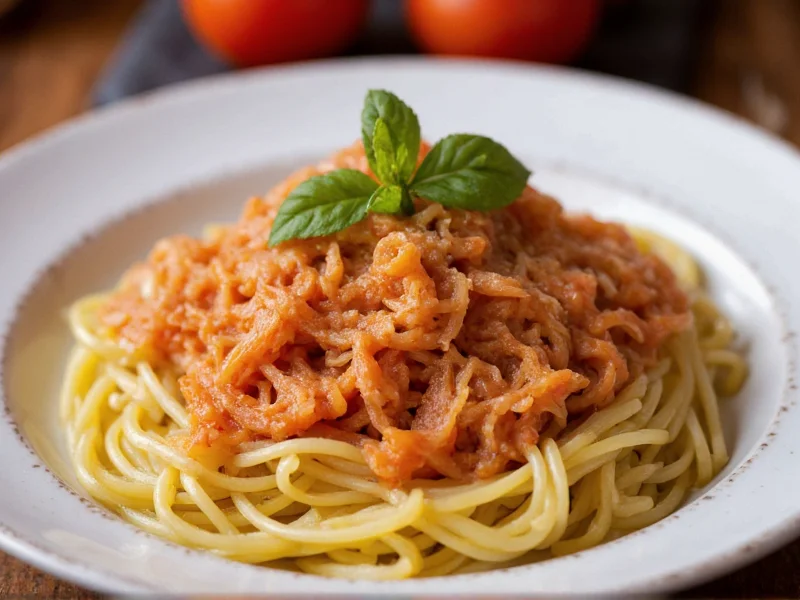Understanding soffritto goes beyond simply combining vegetables—it's about technique, timing, and respecting culinary tradition. This humble mixture might seem simple, but mastering the Italian soffritto technique separates adequate home cooking from truly authentic Italian flavors. When properly executed, soffritto creates a flavor foundation that transforms ordinary ingredients into extraordinary dishes.
The Essential Components of Authentic Italian Soffritto
While variations exist across Italy's regions, the classic soffritto formula remains remarkably consistent. The holy trinity consists of:
- Yellow onions (preferably sweet varieties like Tropea or Vidalia) - 50% of the mixture
- Celery (including leaves for extra flavor) - 25% of the mixture
- Carrots - 25% of the mixture
This precise 2:1:1 ratio creates the perfect balance of sweetness, earthiness, and aromatic complexity. Unlike French mirepoix which uses a 2:1:1 ratio but with different proportions, authentic Italian soffritto emphasizes onion as the dominant flavor component. The vegetables must be finely and uniformly diced—typically 1/8 inch cubes—to ensure even cooking and proper flavor integration.
Soffritto vs. Similar Culinary Techniques
Many cuisines have their version of this aromatic base, but understanding the distinctions is crucial for authentic Italian cooking:
| Technique | Origin | Ingredients | Key Differences |
|---|---|---|---|
| Soffritto | Italy | Onion, celery, carrot | Uses olive oil, onion-dominant (2:1:1), slow-cooked until translucent |
| Mirepoix | France | Onion, celery, carrot | Butter-based, equal parts, often includes herbs, used in stocks |
| Sofrito | Spain/Latin America | Onion, garlic, tomato | Tomato-based, often includes bell peppers, cooked until thick paste |
| Concassé | France | Tomato | Tomato-specific preparation, peeled and diced |
These distinctions matter because substituting one for another alters the fundamental flavor profile of your dish. When preparing traditional Italian soffritto for pasta sauce or risotto, maintaining the authentic vegetable ratio and cooking method preserves the dish's integrity.
Regional Variations Across Italy
While the basic formula remains consistent, regional adaptations of soffritto reflect Italy's diverse culinary landscape:
- Northern Italy: Often includes a small amount of pancetta or butter for richness, reflecting French influences
- Central Italy: Strict adherence to the classic trio with high-quality olive oil
- Southern Italy: May incorporate garlic or tomatoes, showing Mediterranean influences
- Sicily: Sometimes features fennel or anchovies for additional complexity
These regional variations demonstrate how the fundamental soffritto technique adapts to local ingredients and traditions while maintaining its essential purpose as a flavor foundation. When exploring regional Italian soffritto recipes, understanding these subtle differences helps recreate authentic dishes from specific areas.
Mastering the Soffritto Technique: Step-by-Step
Creating perfect soffritto requires attention to detail and proper technique. Follow these steps for authentic results:
- Preparation: Finely dice equal parts celery and carrot, then double that amount of onion. All pieces should be uniform (about 1/8 inch).
- Heat Control: Warm high-quality olive oil in a heavy-bottomed pan over medium-low heat—never hot enough to sizzle immediately.
- Order of Operations: Add onions first (they take longest to cook), followed by celery after 2-3 minutes, then carrots.
- Cooking Time: Cook slowly for 8-12 minutes, stirring occasionally, until vegetables are completely translucent but not browned.
- Seasoning: Add a pinch of salt early to draw out moisture and prevent burning.
- Finishing: The ideal soffritto should be soft, fragrant, and uniformly pale gold—never caramelized.
The most common mistake when making Italian soffritto for beginners is cooking it too quickly. Rushing this step by increasing the heat causes browning rather than the gentle sweating process essential to authentic flavor development. Patience here pays exponential dividends in your final dish.
Practical Applications in Italian Cooking
Soffritto serves as the starting point for countless Italian dishes. Here's how to incorporate it properly:
- Pasta sauces: After soffritto is complete, add tomato products and simmer to develop rich, complex flavors
- Risotto: Sauté soffritto before adding rice to create flavor absorption points on each grain
- Minestrone: Build the soup's foundation with soffritto before adding broth and vegetables
- Braised meats: Use as the base before searing meat to create flavorful pan sauces
Professional chefs often prepare large batches of soffritto to freeze for future use, but for optimal flavor, making it fresh for each dish yields superior results. When following traditional Italian soffritto recipes, remember that this base should enhance—not overpower—the other ingredients in your dish.
Troubleshooting Common Soffritto Problems
Even experienced cooks encounter issues with soffritto. Here's how to solve them:
- Browning instead of sweating: Heat is too high—reduce immediately and add a tablespoon of water to stop cooking
- Uneven cooking: Vegetables aren't uniformly diced—use a sharp knife for consistent pieces
- Watery texture: Salt wasn't added early enough—season at the beginning to draw out moisture
- Lack of flavor development: Cooking time was insufficient—allow full 10 minutes for proper flavor integration
Mastering the classic Italian soffritto technique requires practice, but these troubleshooting tips help overcome common obstacles. Remember that the quality of your soffritto directly impacts the final dish—investing time here creates exponentially better results throughout your cooking process.
Storing and Preserving Soffritto
While fresh soffritto delivers the best flavor, proper storage techniques allow for meal prep efficiency:
- Refrigeration: Store uncooked diced vegetables in airtight containers for up to 3 days
- Freezing: Cooked soffritto freezes well for up to 3 months in ice cube trays then transferred to bags
- Preserved versions: Some regions make concentrated soffritto pastes with added oil for longer storage
When using frozen soffritto for pasta sauce or soups, add it directly from frozen to hot pans—thawing first creates excess moisture. For the most authentic results in traditional Italian cooking, however, freshly prepared soffritto remains unparalleled in flavor and texture.











 浙公网安备
33010002000092号
浙公网安备
33010002000092号 浙B2-20120091-4
浙B2-20120091-4